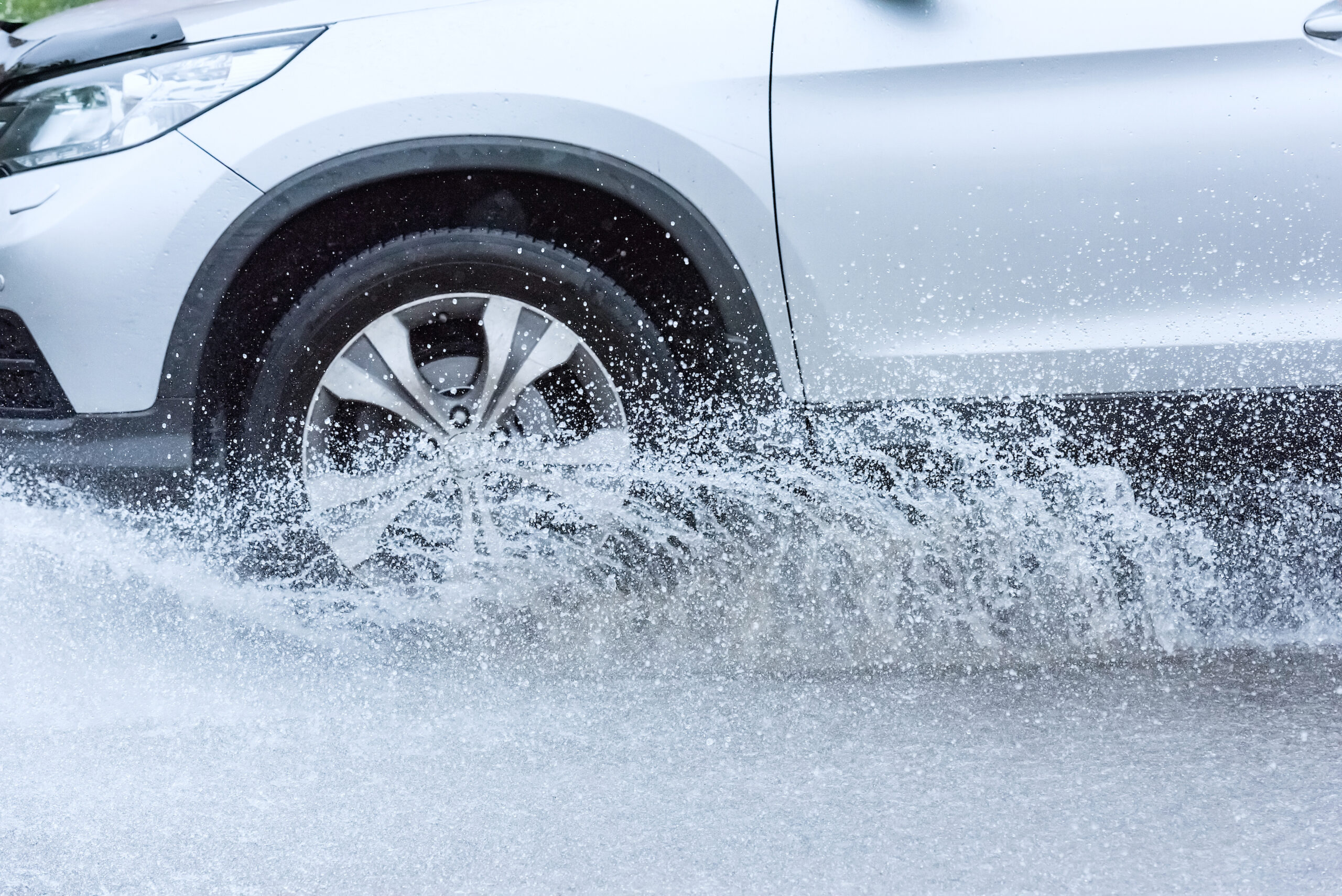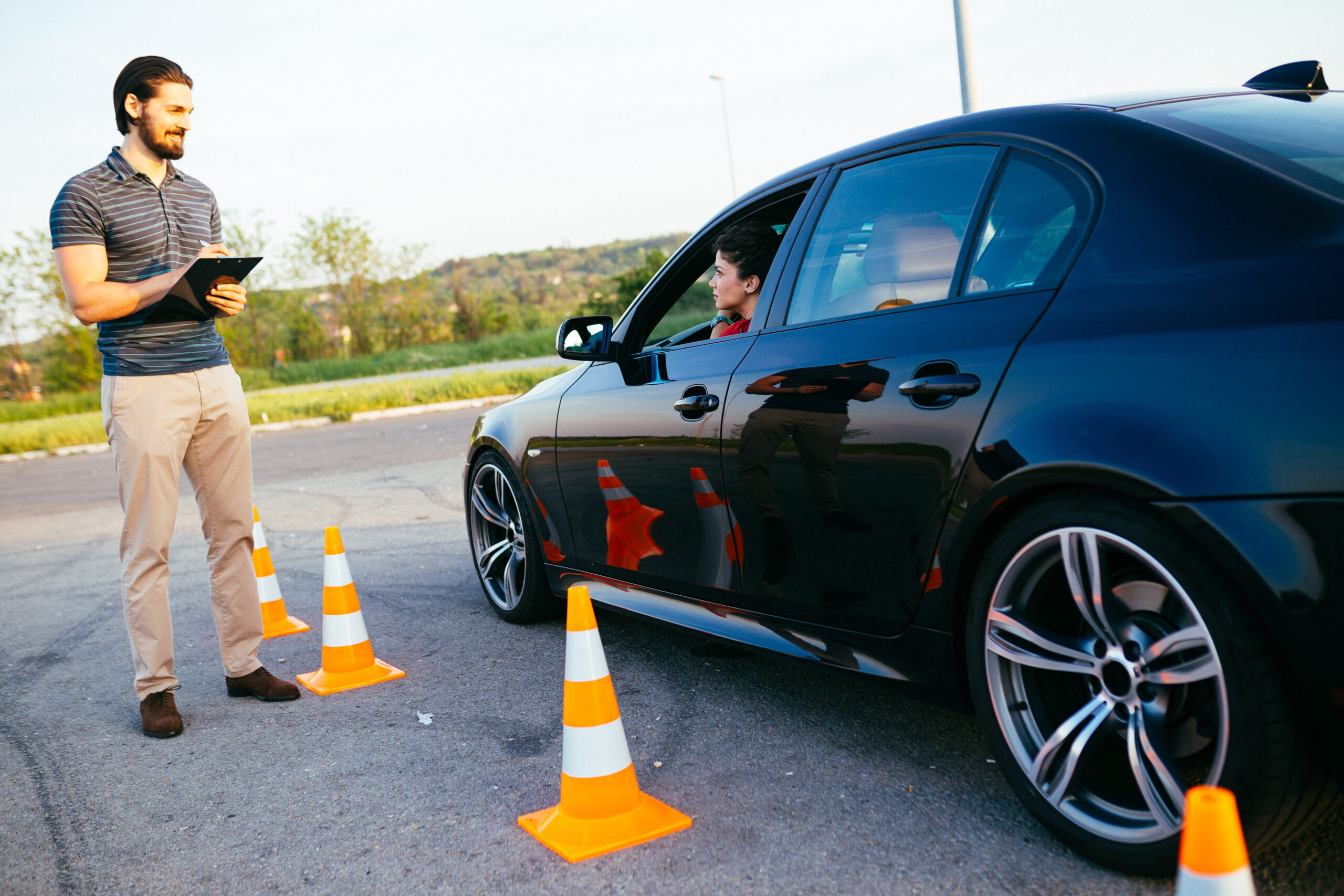5 Tips for Driving In The Rain

Being a good driver is all about staying cautious and knowing how to adapt to changing circumstances. Another part is understanding how your unique environment affects the driving conditions of your daily commute. Given that we are a driving school in Maricopa County, AZ, driving in an arid desert climate is our norm. While we’ll have a separate post for things to consider when driving in Arizona, today we’d like to talk about something a bit less likely…rainfall… and learning how to drive in the rain.
Is Driving in the Rain Hard in Arizona?
Arizona is a fairly dry state, with Phoenix averaging about 8 inches of rain a year. New drivers in Arizona might believe that rain related hazards are not a concern for the thirsty landscape of our local desert, but that’s not entirely true. Anyone who is familiar with monsoon season knows that much of that rain might come swiftly in the form of a flood.
For normal situations, the NHTSA states that the most dangerous time on the road concerning rainfall is actually the first 15 minutes of light rainfall. The reason for this is simple, on smooth asphalt roads, rain can slick the surface of the road, comingling with oils from motor vehicles that are sitting on top of the road. This creates a very slippery surface that is yet to be washed away by more extensive rainfall.
Because rainfall is scarce and less pelting than in more rain-heavy states such as in the South, this slicked surface can potentially last longer in states with minimal rainfall and lighter rain sessions such as Arizona, exacerbating the lack of traction. While our rainfall is scarce, that does not mean you or your teen driver should not assume that driving on slippery roads will never occur.
Tips for Learning How to Drive in the Rain
At Legacy Driving Academy, we pride ourselves on providing a comprehensive drivers education course that will prepare anyone for the thrills and hazards of driving. Here are a few tips for keeping safe while driving in the rain and slippery conditions.
1 – Take Stock of Your Vehicle’s Condition
As much as we would like to pretend that every driver has routine maintenance performed on their vehicle at regular intervals, the truth is what was once a strict habit can quickly become stretching that oil change and tire rotation a little bit too long.
In the case of your tires, not getting them rotated often—or not replacing them when worn can be a dangerous choice. If the tread on your tires are worn, this is already not great for regular road driving, but weak tread on tires is even worse on a rain slicked road. If you are driving on worn tires, handle your car with that in mind and take care to avoid any sudden braking or sharp turns.
2 – Drive Slowly and Comfortably
You should always obey the speed limit, but that goes even doubly so when you’re driving in the rain and on slippery roads. Don’t be afraid to go a little slower than you normally would when it’s raining. Being a few minutes later to your destination is a preferable alternative to filling out an accident report and not making it there at all.
3 – Keep a Safe Distance Between You and the Car in Front
Tailgating someone is never recommended for a reason. Likewise, consider that when it is raining, extra distance must be made to account for the fact that people will have a respond late and sharply to any road incidents when it is raining. This means that more distance than normal is needed should the person in front of you brake or swerve. Likewise, you should also avoid braking heavily unless absolutely necessary.
4 – Watch out for Large Puddles or Films of Water
Have you ever been driving along the side of the road and all of a sudden you’re greeted by a loud “GSHHHHHHGH”? Pardon the sound effects, we hope they translated. Large puddles on the side of the road can cause you to lose control of the car. If not that, they can certainly take you by surprise and create a momentary distraction.
5 – Turn your Headlights On
You might think it common sense to turn your headlights on as soon as it begins to rain, but many people either do not feel it necessary or simply forget to. In most cases, the rain is light enough that many people thing it’s not necessary, but it is best not to assume that everyone has vision as great as you do.
Turning your headlights on in the rain can help the overcast and dreary road become a bit more distinguished and help other drivers identify you in their rear-view mirrors much more quickly than if you had them turned off.
Learning How to Drive in the Rain is Easy with Our Driving School in Maricopa County AZ
Legacy Driving Academy will help any student become a fit and functional driver through our affordable and robust driving programs. Whether you’re a new teen driver or someone who got by on public transportation up until now, learning to drive can be made simple and safe through the efforts of our experienced and dedicated driving teachers. Visit our driving school in Maricopa County, AZ today!
Contact us for any questions you may have about our programs, pricing, dates, etc.
